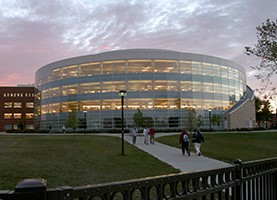In his 1994 book, The Great Good Place: Cafes, Coffee Shops, Bookstores, Bars, Hair Salons, and Other Hangouts at the Heart of a Community, sociologist Ray Oldenburg proposes that to be emotionally healthy a person needs three places in their life: home, work, and a third place.
The home provides safety, comfort, and shelter, while work offers consistency and a sense of satisfaction. The third place is where our other needs are met. It is a place that provides a sense of belonging and satisfaction not derived from the other two places. Oldenburg sees third places as the “anchors” of a community and essential to civil society, democracy, and an individual’s sense of self.
According to Oldenburg, these third places share a set of distinct characteristics, including:
• Longer hours of operation, which allows individuals to visit and enjoy them after the workday has ended and on weekends
• A typically social and interactive environment
• A looser structure and a low-stress atmosphere that emphasize enjoyment and serves as a respite from one’s daily obligations
• Accessibility, openness to all, and accommodation of the needs of those who use the spaces
• A level playing field, meaning individuals who enter the space are on equal footing and able to interact as equals
• Neutrality, meaning individuals have no obligation to be there and can come and go as they please
This third place can take many forms depending on the needs and interests of the individual, and the significance it carries will vary from person to person. But it is, in short, a place of purposeful meaning to the individual. Notable third places are community centers, pubs, churches, coffee shops, athletic clubs, and places where one does volunteer work.
Libraries are frequently cited as third places because they reflect many of the characteristics Oldenburg describes. They offer longer hours which allow people to use them at times convenient to their schedules; they offer a variety of social and interactive spaces perfect for relaxing and working with others on group projects; libraries have a less formal structure which allows those who enter the building to choose their activity and their desired environment; they are accessible and open to all and offer access to resources and information essential to a civil society; they offer an alternative space beyond the college student’s home (noisy residence hall or apartment) and work (highly structured classroom) environments.
The CMU Library offers longer hours of operation, is open to all, provides spaces to gather and collaborate, and is a place people can go to have a personalized experience different from home and work. In recent years we have intentionally undertaken projects which build on the characteristics of place as Oldenburg describes them. The library has relaxed its food and drink policies in recognition of the fact students spend long amounts of time in the building and need a more relaxed space that accommodates their needs for the occasional snack and coffee or soda. In September 2018, the library moved to 24/4 hours of operation model for the 1 North Study Room, meaning the room opened on Sunday morning and closed at midnight on Thursday. This schedule was extended to 24/5 (Sunday – Friday) for the Fall 2019 semester.
During the summer of 2019, the 3 East study area opened, offering students a contemporary, flexible space where they can work together in groups or individually. Each of these changes to library policy and physical environment was in direct response to student feedback about how the CMU Library might better meet their needs.
Academic libraries are frequently described as “the heart of the university.” They are considered a special place by many students and faculty, and here in the CMU Library, we are already discussing other ways to make the CMU Library even more of a welcoming and engaging destination. We want it to be a place people seek out because they know the time they spend there will be pleasant, purposeful, and meaningful. We want it to be, in short, a third place.

